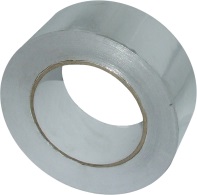Soundproofing helps reduce the level of noise pollution caused within your engine room, which helps protect not only yourself but also surrounding wildlife. In this guest blog our friends at ASAP Supplies explain how to tackle the issue of a noisy engine.
• Choose what thickness of soundproofing you want - 23mm to 58mm
• Use a neoprene based spray adhesive to fix sheets to walls
• Use washers to fix onto floors, roofs or hatches
• Cut any sheets down to size with a long, sharp knife
• The average price of a box of proofing is betwen £100 - £130
If your engine hatch or room is already effectively soundproofed, view these 11 effective methods from Sound Control Services to ensure all rooms onboard are peaceful and quiet.
At ASAP we recommend Quietlife products for effective soundproofing, however it’s important to remember that assembly is key to a good product.
How to control your noise?
Noise and vibration comes from many sources around your vessel, it can cause what should be a leisurely cruise to become very tiresome and un-enjoyable.
What options are available?
There are many sizes available for soundproofing, however the ASAP Quietlife soundproofing family consists of the Slimslab 23, Standard 32, Quiet 45, and the Super 58. The number refers to the total thickness per sheet; each sheet is approximately 1000mm x 600mm. The type you'll require will depend on the type of engine and whether the noise is a high or low frequency.
Each type of soundproofing consists of 5 parts, the successful ‘Barrier / Layer’ principle:
1. The facing – There are two different types; foil facing which is fireproof and has light reflective silver finish. The other option is white glass cloth which is durable and has a hard wearing finish.
2. The absorption layer – Fireguard foam is open cell foam ensuring the sound travels the furthest distance, this means it will offer maximum noise absorption and removes much of the high frequency sound.
3. The barrier – This is where other soundproofing products lack the performance. For the best mass and low frequency sound absorptions, we use lead or 5kg / m2 polymeric barriers. Always check the weight, as more mass means more sound deadening. Lead tends to be the favourable but modern polymeric materials achieve almost the same result.
4. Mounting foam – Its purpose is to isolate the barrier from the mounting surface which helps eliminate noise transfer.
5. The bonding process – All the above materials are factory bonded to form a sandwich, the process starts by coating the material with adhesive and then the layers are pressed together to guarantee the strongest possible bond, this is designed to virtually eliminate the breakdown of materials.
How to fix the soundproofing

The most popular fixing method is to use a neoprene based spray adhesive; most good quality brands are suitable, however it's always good practice to test the adhesive on a small piece first to check compatibility. One 500ml aerosol will provide sufficient adhesive to fix 2.4m² of ASAP Quietlife soundproofing. When fixing the sheet you must ensure that the facing sheet is facing towards the engine, as this will absorb the airborne noise and fireguard the foam. You must also make sure that the surface is clean, dry and free from dust particles; use a thin even coat, don't apply the contact adhesive with a heavy hand.
You may also require fixing washers for fitting to the underside of flooring, roofs and hatches. Batons are also a good idea to provide any extra support. To prevent any airborne noise escaping through gaps in hatches or doors we advise the use of a hatch foam tape which will seal the gaps.
Need to cut a sheet? Use a long blade knife with a straight edge guide to keep it neat and prevent any gaps. For the lead barrier, we advise using industrial scissors and to make sure the joints are covered with sealing tape (pictured below).

What are the costs of soundproofing your engine room?
The cost of a box of soundproofing ranges between £98-£130 but the size and weight of the soundproofing you'll require varies depending on your demands. The costs are far outweighed by the benefits as the proofing requires very little maintenance and will provide excellent sound deadening for many years to come.
For more information, visit the ASAP Supplies site


